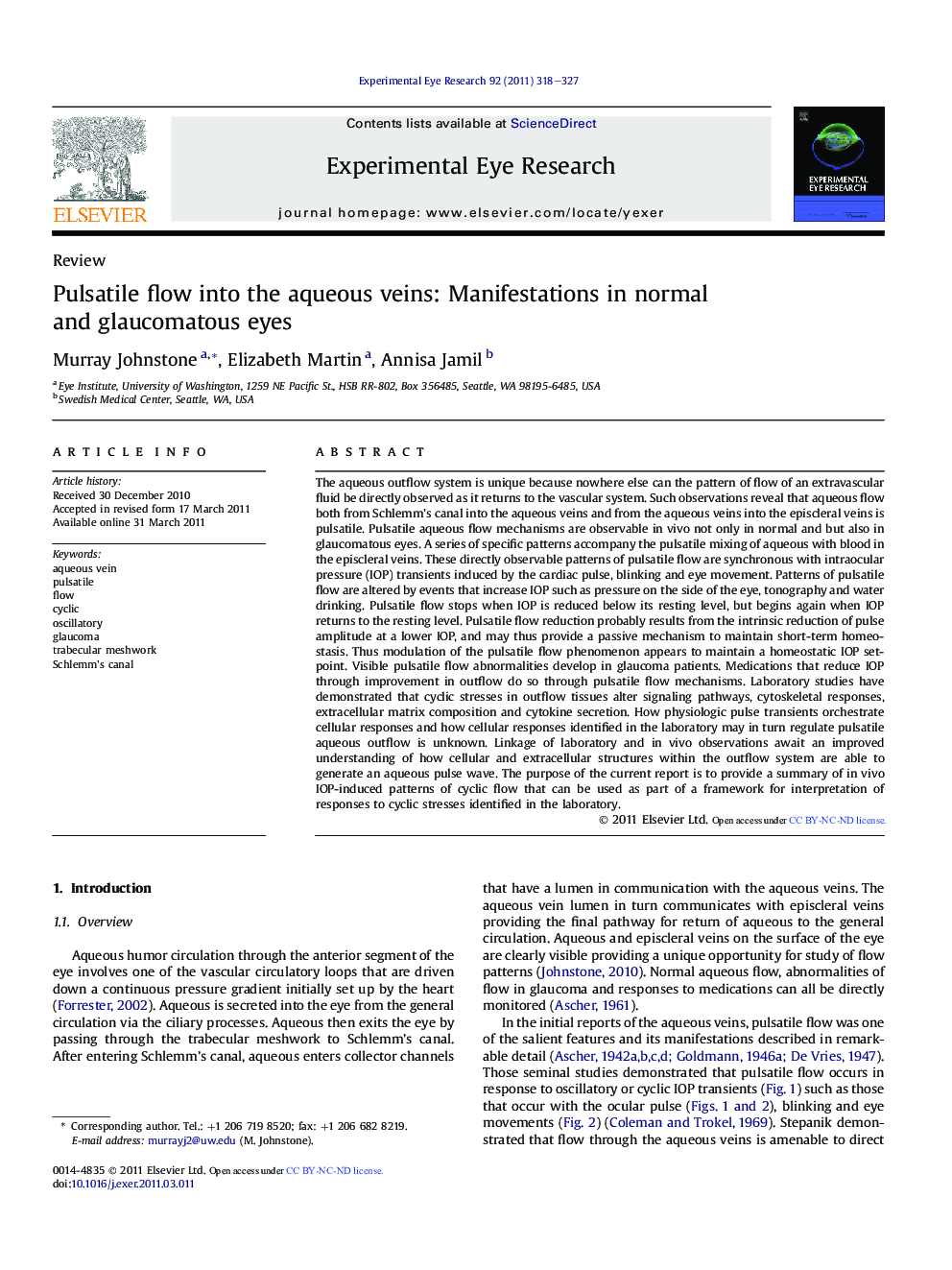| کد مقاله | کد نشریه | سال انتشار | مقاله انگلیسی | نسخه تمام متن |
|---|---|---|---|---|
| 6197432 | 1261158 | 2011 | 10 صفحه PDF | دانلود رایگان |

The aqueous outflow system is unique because nowhere else can the pattern of flow of an extravascular fluid be directly observed as it returns to the vascular system. Such observations reveal that aqueous flow both from Schlemm's canal into the aqueous veins and from the aqueous veins into the episcleral veins is pulsatile. Pulsatile aqueous flow mechanisms are observable in vivo not only in normal and but also in glaucomatous eyes. A series of specific patterns accompany the pulsatile mixing of aqueous with blood in the episcleral veins. These directly observable patterns of pulsatile flow are synchronous with intraocular pressure (IOP) transients induced by the cardiac pulse, blinking and eye movement. Patterns of pulsatile flow are altered by events that increase IOP such as pressure on the side of the eye, tonography and water drinking. Pulsatile flow stops when IOP is reduced below its resting level, but begins again when IOP returns to the resting level. Pulsatile flow reduction probably results from the intrinsic reduction of pulse amplitude at a lower IOP, and may thus provide a passive mechanism to maintain short-term homeostasis. Thus modulation of the pulsatile flow phenomenon appears to maintain a homeostatic IOP setpoint. Visible pulsatile flow abnormalities develop in glaucoma patients. Medications that reduce IOP through improvement in outflow do so through pulsatile flow mechanisms. Laboratory studies have demonstrated that cyclic stresses in outflow tissues alter signaling pathways, cytoskeletal responses, extracellular matrix composition and cytokine secretion. How physiologic pulse transients orchestrate cellular responses and how cellular responses identified in the laboratory may in turn regulate pulsatile aqueous outflow is unknown. Linkage of laboratory and in vivo observations await an improved understanding of how cellular and extracellular structures within the outflow system are able to generate an aqueous pulse wave. The purpose of the current report is to provide a summary of in vivo IOP-induced patterns of cyclic flow that can be used as part of a framework for interpretation of responses to cyclic stresses identified in the laboratory.
⺠Flow into the aqueous veins is pulsatile resulting from pressure transients. ⺠Pressure transients result from the cardiac pulse, blinking and eye movement. ⺠Pulsatile aqueous flow into the episcleral veins originates in Schlemm's canal. ⺠Pulsatile flow is diminished in glaucoma eyes. ⺠Medications that improve conventional outflow increase pulsatile aqueous flow.
Journal: Experimental Eye Research - Volume 92, Issue 5, May 2011, Pages 318-327